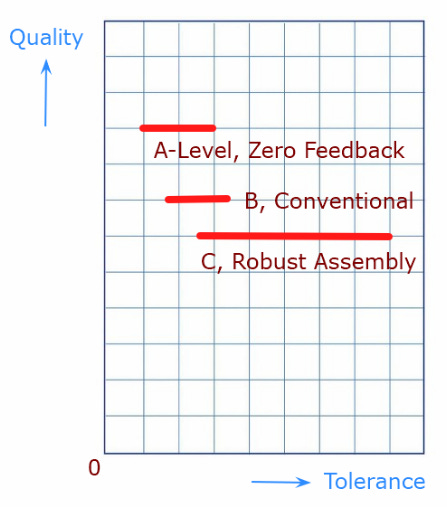About a century ago, as telephone lines blanketed the country, signals often withered to noise because the repeaters (amplifiers) varied in quality. Black of Bell Labs invented negative feedback, and amplifier consistency became the norm. Ridding the world of duds only moderately lowered maximum amplifier quality, yet telephones were never audiophile grade. Feedback always creates some form of distortion.
Designing and building the best equipment taxes people and organizations. Some companies tune equipment by soldering in extra capacitors; others remove and replace parts until a product works. Before assembly, Bill Hutchins of LKV Research matches precision components for each channel. Clean and discrete.
Using opamps with their internal feedback would make work so much easier in design and build, but the amplifiers would never be the best. To put it differently, zero-feedback allows a robust product but not a robust manufacturing process. When I worked as a manufacturing engineer, my procedures, materials, and designs were glorious "C" quality. 20% tolerance resistors are lovely things. Plonk, plonk, plonk. “B” designers using 1% resistors and feedback raised materials costs. Consider the following extremely simplified chart.
"A-Level" products include zero-feedback designs using tight tolerance components, exacting circuits, and careful assembly. Welcome to the world of Bill Hutchins and LKV Research.
The Design Approaches in the Service of One Main Goal
Minimize All Sources of Distortion & Noise
AZF Circuitry
Distortion, not just IMD and THD
Class A Signal Amplification, Class D Speaker Output
Zero Feedback
Matched, Key-Discrete Components
No Opamps in Class A (Opamps use feedback)
No Electrolytics in Signal Paths
Noise
Differential (aka Balanced) Circuitry
Short-Lengths for Signal Paths
Dual-Mono for Minimal Crosstalk*
XLR (aka Balanced) & RCA Inputs & Outputs*
Linear Power Supplies, external supplies on pre-amplifiers.*


